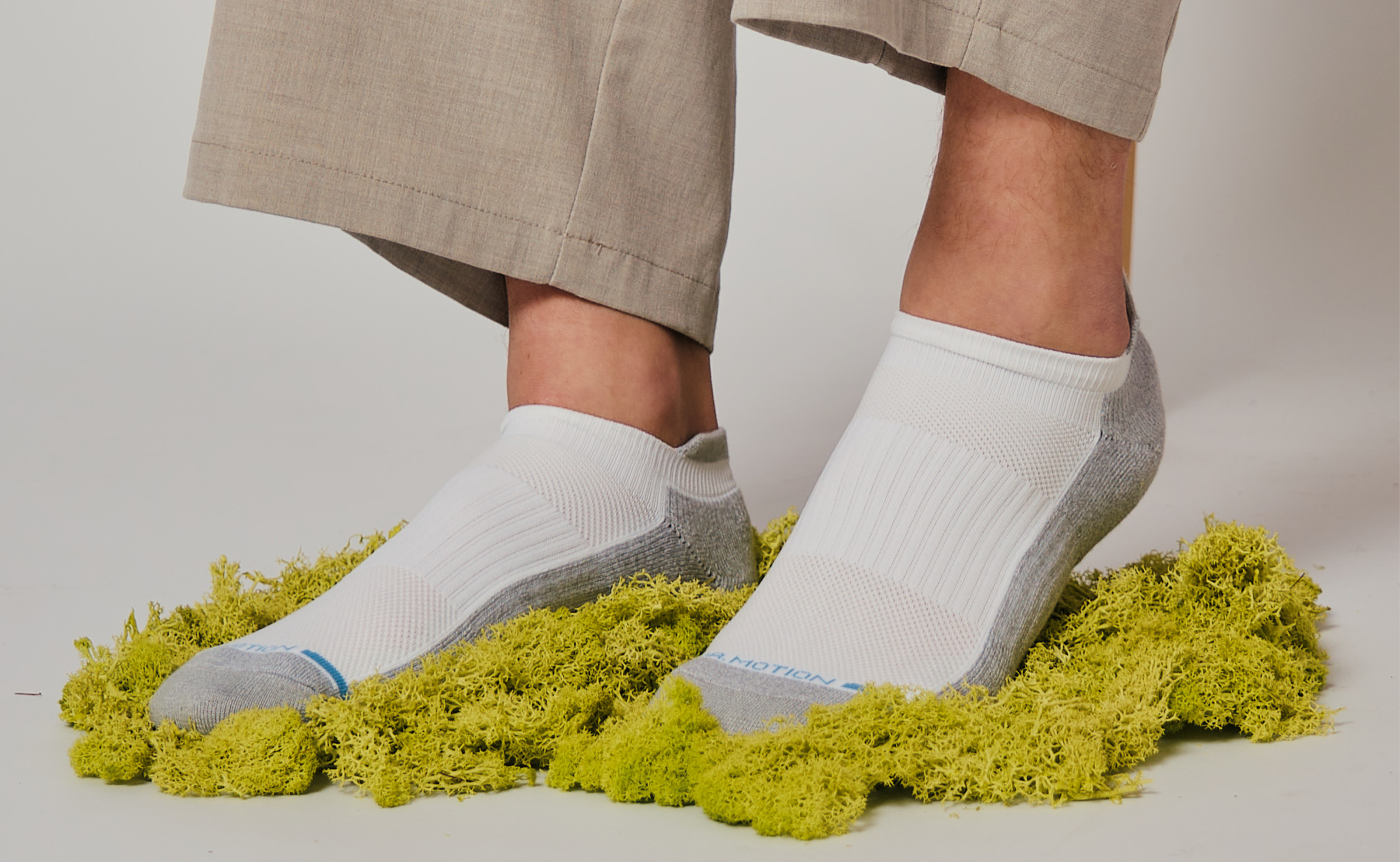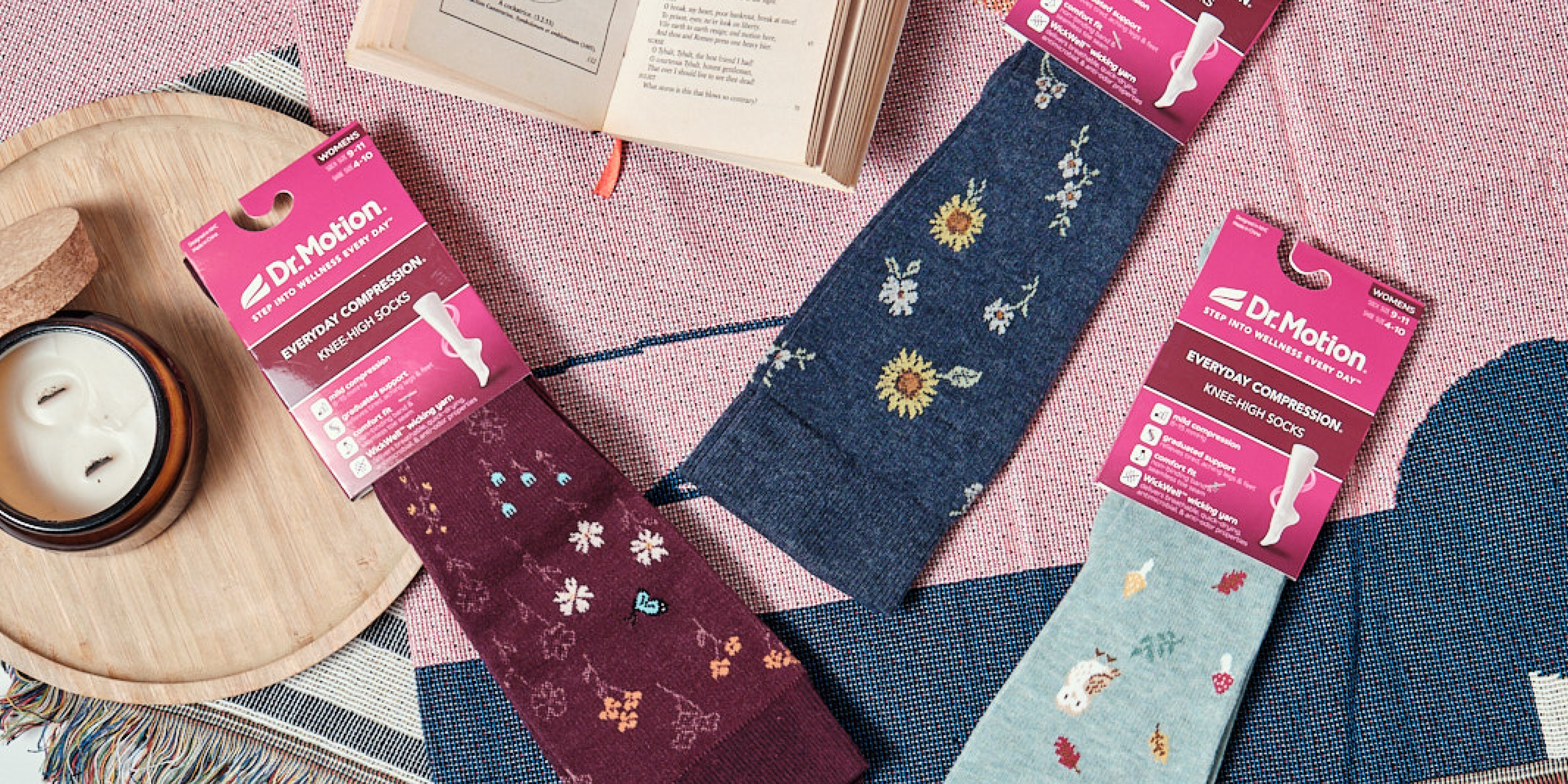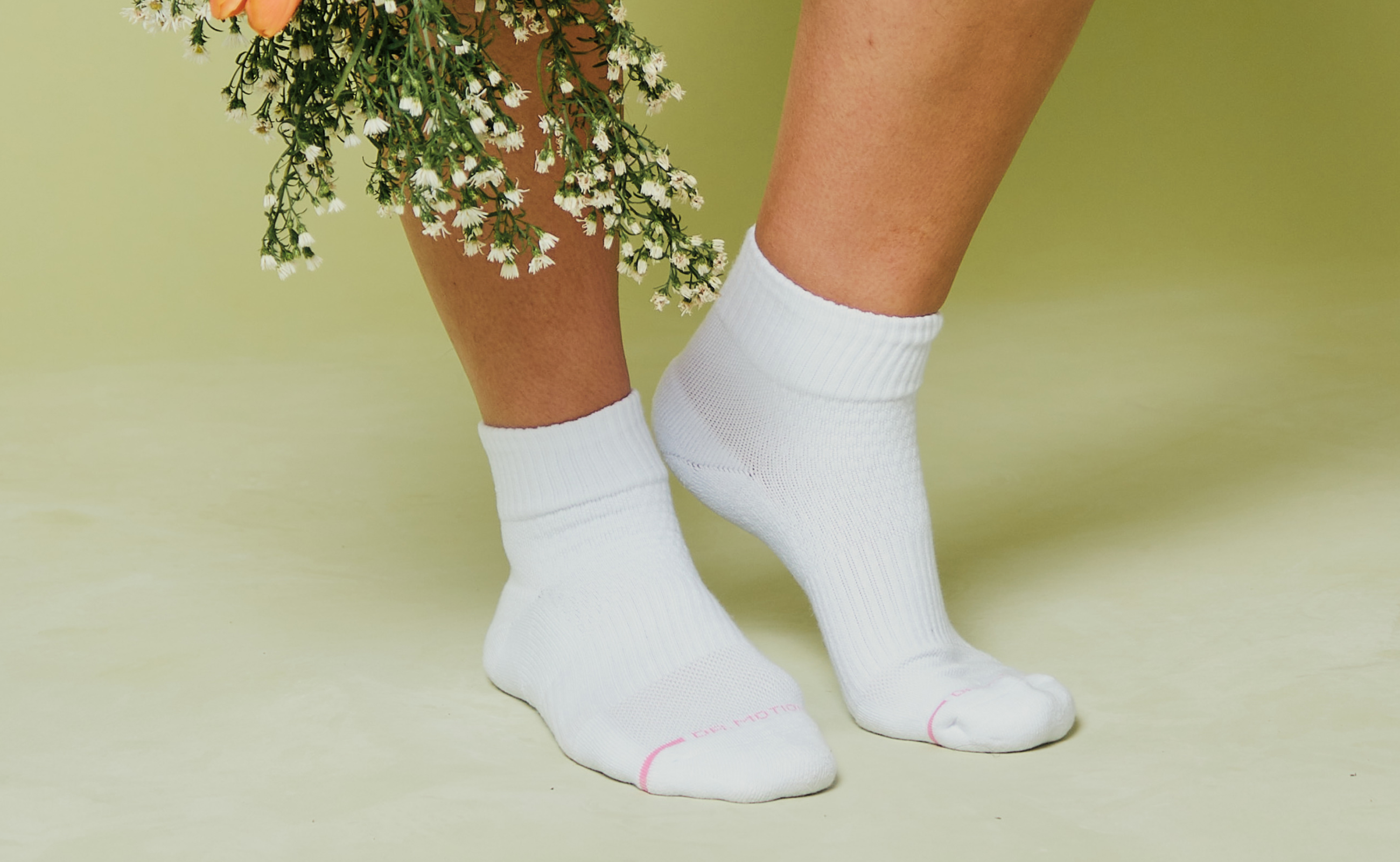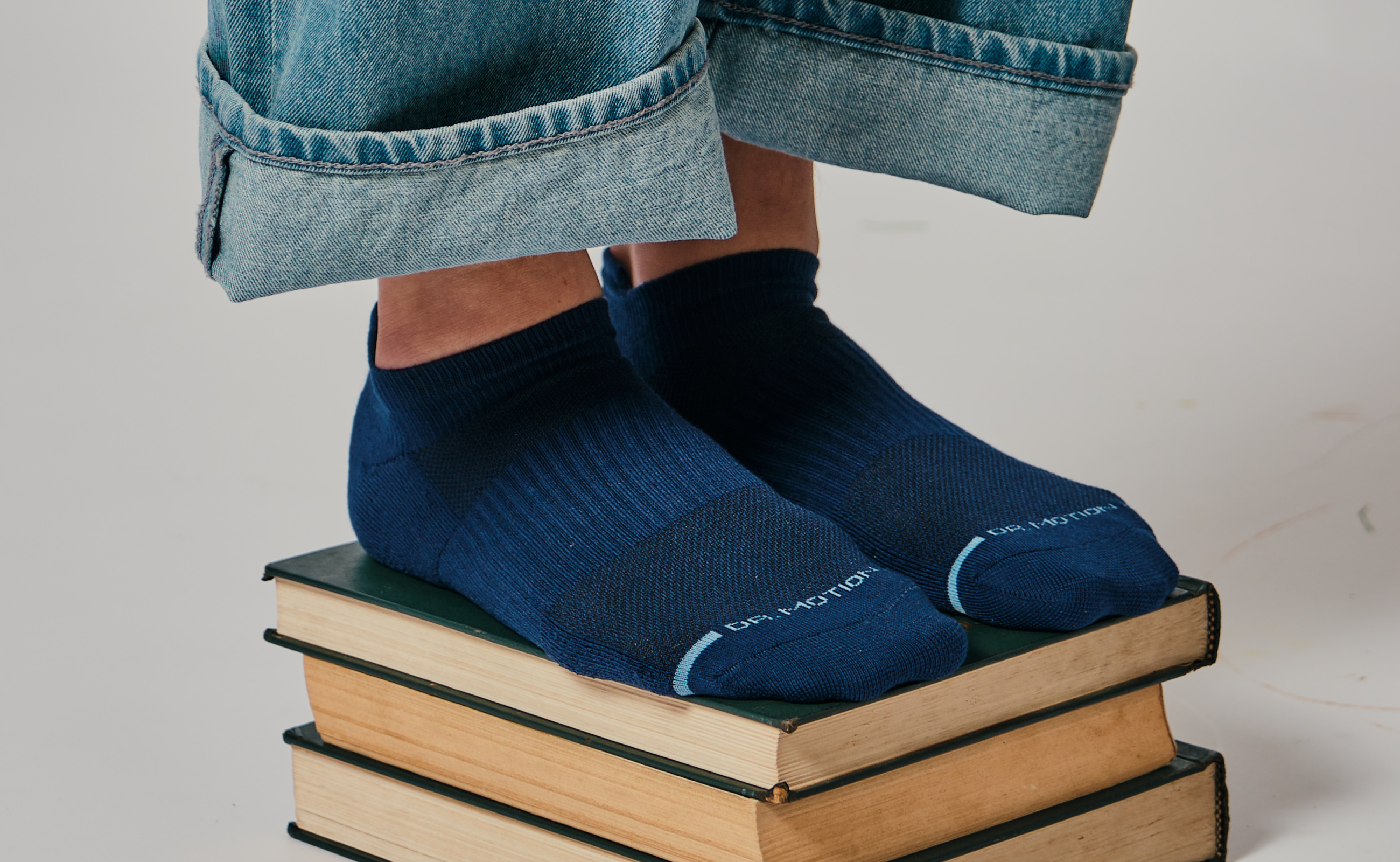Sock School
In today's market, there are many products that claim to have wellness properties but do not. We created this section to help educate you, as a consumer, on what you should be looking for when you are making a purchase for wellness hosiery, even if it means you may ultimately choose to make a purchase from another brand. We have purchased and tested various "graduated compression" products that were confirmed through lab testing to be non-compliant. Non-compliant products can cause pain, discomfort, and possibly pressure necrosis. We care more about your health than making a sale. If we can help you make an educated decision to purchase the best product for yourself, then we are happy!
What is wellness hosiery?
We categorize wellness hosiery as legwear (i.e. socks, tights) that have benefits to users' health and wellbeing and can positively enhance your day-to-day life.
How can these benefits be achieved?
A sock can just be a sock but a sock can also be extremely technical. Different yarns can provide different benefits. For example, copper ion infused yarns have anti-inflammatory properties. How yarns are treated can also provide different benefits. For example, the Ultrafresh treatment of yarn improves the yarn's wicking and odor prevention properties. Most importantly, the construction of the sock provides the most noticeable difference. Nowadays, sock knitting machines have diverse capabilities to knit certain parts of the socks in different ways; one area of a sock can be tighter to provide more support, another area can be thicker to provide more cushion, another area can be looser to provide unrestricted comfort, etc. All of these technical components can be combined into one sock to provide the maximum amount of benefits.
What is graduated compression?
Graduated, or gradient, compression socks are tighter at the ankle (more compression) and slightly decrease in tightness moving up to the knee (less compression). This promotes blood flow up the leg. By compressing the surface veins, arteries, and muscles, they push circulating blood through narrower channels resulting in better circulation and various health benefits.
What are the different categories of compression socks?
- Mild Compression: less than 20mmHg or class 1
- Moderate Compression: of 20–30mmHg or class 2
- High Compression: greater than 30mmHg, or class 3
What are benefits do the different classes of compression socks?
Class 1- Mild Compression
- Support for mildly aching and tired legs
- Day-to-day relief from achy, heavy, slightly swollen legs
- Support and comfort for either standing or sitting for long periods
- Promotes blood circulation to support general health and energy
- Can help prevent varicose and spider veins
Class 2 - Moderate Compression
- The most commonly prescribed compression level by doctors
- Used to help a variety of minor to moderate medical conditions
- Used to help chronically painful, heavily fatigued legs
- Helpful in the treatment of varicose veins
- Relief from the swelling associated with mild edema
Class 3 - High Compression
- Relief from moderate and severe edema and lymphedema
- Helps prevent and relieve more serious cases of varicose veins
- Used in the treatment of deep vein thrombosis & post thrombotic syndrome
- Can help heal active venous stasis ulcers
- Used after bone fractures and orthopedic surgeries
How is the compression level measured?
The compression level is measured at 4 different points. Many compression sock brands (including Dr. Motion) utilize Swisslastic AG St. Gallen (SAG). 
For knee-high compression socks, the 4 testing points are: b, b1, c, d. Point b will be the tightest pressure level. For example, for Dr. Motion products that are 8-15mmHg, point b measures 15mmHg. Each point after point b gradually decreases until point d or point g for thigh-high products, which should measure the lowest of the compression level range. In our knee-high products, point d will measure 8mmHg; our thigh-high products will measure 5mmHg at point g.
Can ankle socks be graduated compression?
If you have seen ankle socks advertised as graduated compression, you have been given inaccurate information. Since graduated compression levels are measured from the ankle and up (as illustrated above), any short sock silhouette (ankle and below) is not graduated compression. They can be compression (tighter than your usual sock) but they cannot be graduated compression.
If you're looking for more information, take a look at these following:
- Graduated Compression Stockings by Chung Sim Lim, MBBS PhD & Alun H. Davies
- Efficacy of class 1 elastic compression stockings in the early stages of chronic venous disease. A comparative study. by Benigni JP, Sadoun S, Allaert FA, et al.






